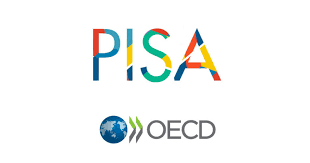Main findings:
- From an EU perspective, the PISA results are particularly important because they feed into the strategic framework for European cooperation in the field of education and training, as part of which Member States set the ambition to reduce the number of underachieving pupils in the EU to below 15% by 2020. Overall, the 2018 PISA results show that the EU has not yet met its benchmark for underachievement. More than one in five 15-year-olds in the EU (21.7% in reading, 22.4% in mathematics and 21.6% in science) cannot complete even simple tasks in the tested domain. In the EU as a whole, underachievement increased in science and reading and remained stable in mathematics over the past decade.
- Some EU Member States have improved their performance over time, showing that reducing underachievement is possible. Estonia, whose education system is marked by a continuing willingness to modernise, is the best performing EU Member State when looking at underachievers in all three domains and among the best when it comes to high achievers. Thanks to educational reforms, Poland has kept its share of underachievers below 15% in all three domains in PISA 2018. Over the past decade, Ireland’s investments in increasing quality and expanding early childhood education and care have reduced the impact of pupils’ socio-economic background on their performance.
- PISA also makes it possible to analyse national performance by gender, socio-economic status and immigrant background, and contains other contextual information and pupils’ attitudes. The 2018 results show a sizeable gender gap in reading, where girls outperform boys everywhere in the EU. A wide performance gap in reading also exists between pupils in general education and those in vocational programmes. A migrant background also has negative effects on pupils’ reading performance.
- Socio-economic background strongly affects pupils’ performance and their academic expectations in most EU Member States. Moreover, countries with a large share of underachievers also tend to have large performance gaps between pupils from advantaged and disadvantaged socio-economic backgrounds. The PISA results clearly show that education systems can pursue excellence and equity at the same time. Overall, countries with small proportions of underachievers also tend to have high proportions of top performers.
- Finally, the PISA results highlight the importance of the school climate for pupil wellbeing and performance. In some countries, more than one in three pupils feel that they do not belong at school. In a majority of EU Member States, more than one in five report that they are bullied at least a few times a month. Both the feeling of not belonging at school and exposure to bullying negatively affect pupils’ reading performance.
https://www.oecd.org/pisa/
https://ec.europa.eu/education/policies/school/key-competences-and-basic...
